It seems almost unbelievable that Canon were still designing and releasing film cameras as late as 2004, a time when the digital revolution was well and truly underway. Only one year later, in 2005, Canon would release the 350D, a camera which continued the legacy of the game changing 300D and went a long way towards finalising the ultimate demise of 35mm film SLR’s.
In 2002, exactly one year before the release of the 300D, Canon released what would be their penultimate consumer level film SLR. It introduced a radical new ergonomic design language and “one hand control” system. Many of the design features had been seen on other bodies previously, especially the IX7 APS SLR in terms of the larger LCD display and control dial placements. The design was just cosmetics, the big selling point was the new 7 point AF system which Canon alleged was the fastest AF available on “similar cameras” at the time.
Let’s see what all the fuss was about, whether the new body design really was a step forward and why anyone would’ve still shelled out for a film SLR in 2002.
In this review:
- A new ergonomic approach
- Look, Mom, one hand…
- Buying a 300V in 2022
- AF performance and controls
- Where does it fit in?
- Conclusions and Learning
A new ergonomic approach
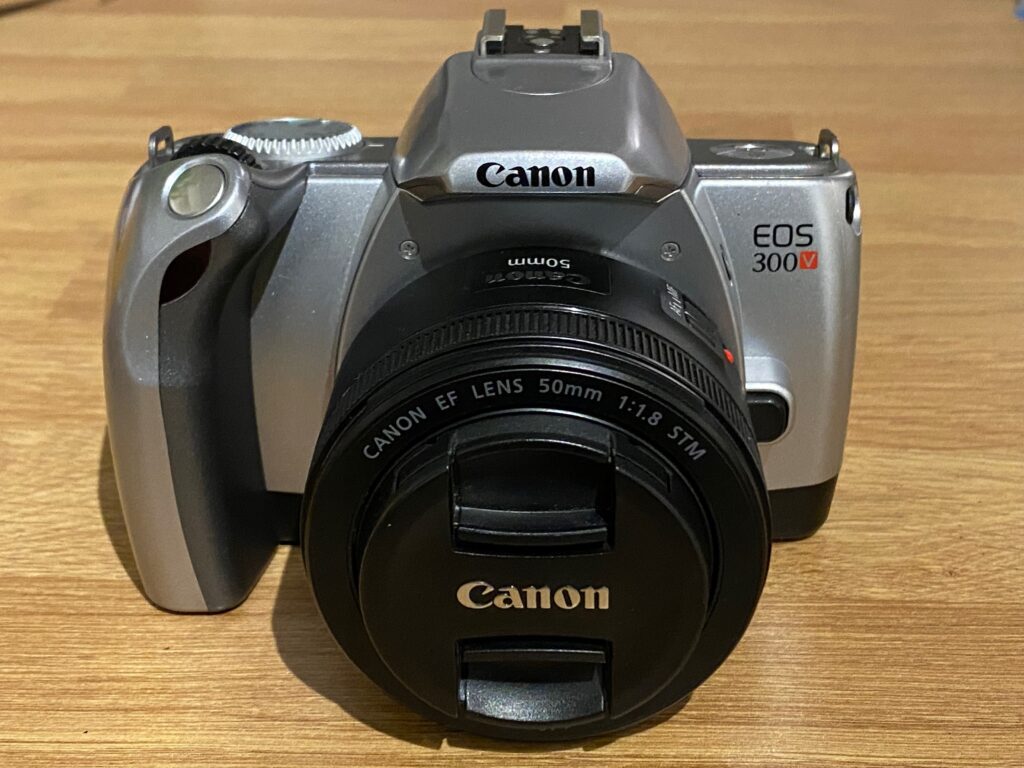
As any technology reaches maturity, it becomes ever harder for manufacturers to produce something truly new. Furthermore, there is an ever shortening gap between the top and bottom of any range as most features that the majority of users need in a device have trickled down and they’re perfectly happy to stick with a cheaper option than splash out on ever diminishing returns.
When something revolutionary comes out, like auto focus, there is suddenly a meaningful upgrade path for most customers to follow. There will always be some who refuse to move on, I mean given the choice I’d still be running Windows 2000. Those early adopters effectively act as beta testers – they get the thrill of feeling cutting edge owning something that works well enough to be released to the general public, but it’s never that good for the first couple of releases. Manufacturers learn a lot from their mass customer feedback.
By the end of a product run, certain features will be so refined that even the basic models have more than respectable versions in them, and so it was with the features found in the 300V. Auto focus was now so cheap to produce that even this entry level model had really quite fast and capable, 7 point (a lot in 2002) AF that worked well on moving subjects and still objects. If you’d shown it to someone ten years prior they’d have happily paid you thousands for the performance on offer.
Compared to the early top of the range EOS models, such as the 1, 10 and 50, the 300V cost hundreds of pounds less and gave better performance in a smaller, lighter body. This is just the way technology works, it is remarkable, but in the 15 years since the range had launched it would actually have cost more to produce a “less capable” system for lower end models than just to stick in the latest developments.
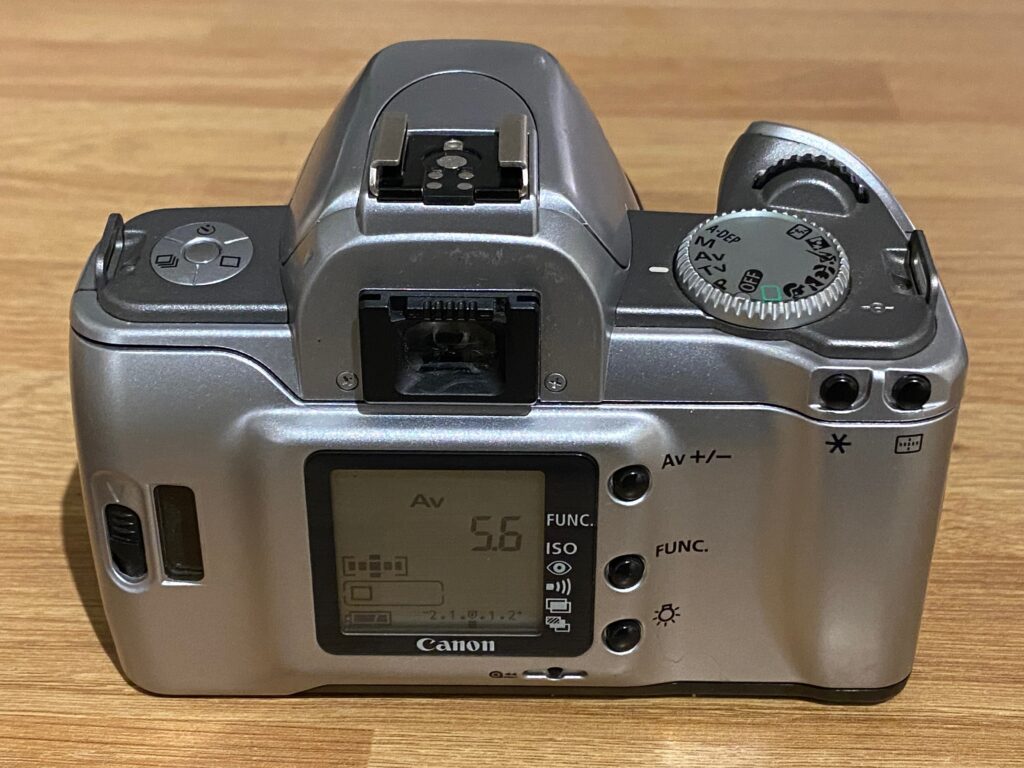
So, the 300V comes with killer AF, but there had to be something else that made this model stand out from what had come before, something for the marketing department to get their teeth into, as on the face of it AF just wasn’t exciting any more.
One thing any Business Studies textbook will teach you is the sheer power of the “extension strategy” for increasing the longevity of a product life span. This is where you redesign the physical look of the same product, lower the price a little or increase the feature set and relaunch as a “new” product. Gillette are masters of this – add a blade, remove a blade, change the colour, add a ball thingy. It’s still a razor, but has been “new” for over 100 years. For Canon, their Gillette moment came in the form of a new design language based on the buzzword of the day – ergonomics.
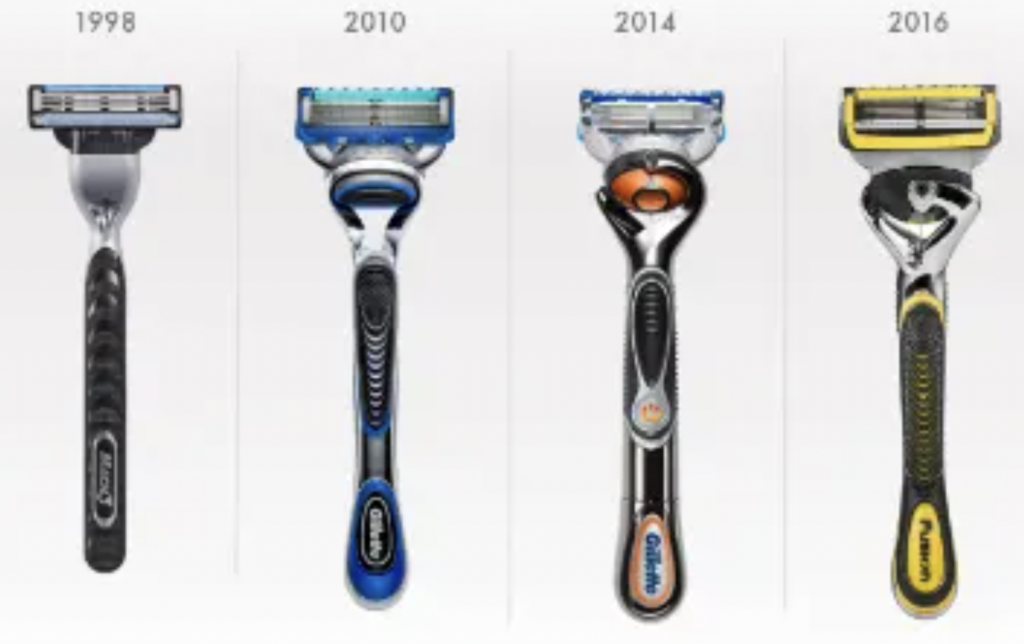
The concept of devices that fit the human form wasn’t new, but certainly no one sane would argue that their camera, keyboard, mouse or TV remote felt like a second skin. There was always some form of compromise and this gave the designers at Canon somewhere to start from. In terms of ergonomics, there is one obvious place to begin with a camera and that is the grip.
The 300V introduced a fairly radical redesign of the grip which solved the problem of having a physically small and light body but the need to be hand held for long periods of time whilst potentially attached to big heavy lenses. The 350D with its hateful little stub of a grip could’ve learned so much from the 300V.
This wasn’t the first time Canon had sought to redesign the fairly standard “can of coke” grip design. The 700 series all feature really odd twisty type grips that are meant to accommodate various fingers on your right hand. The difference there, and perhaps why it didn’t catch on in the other models, was that the 700 series were utterly awful cameras.
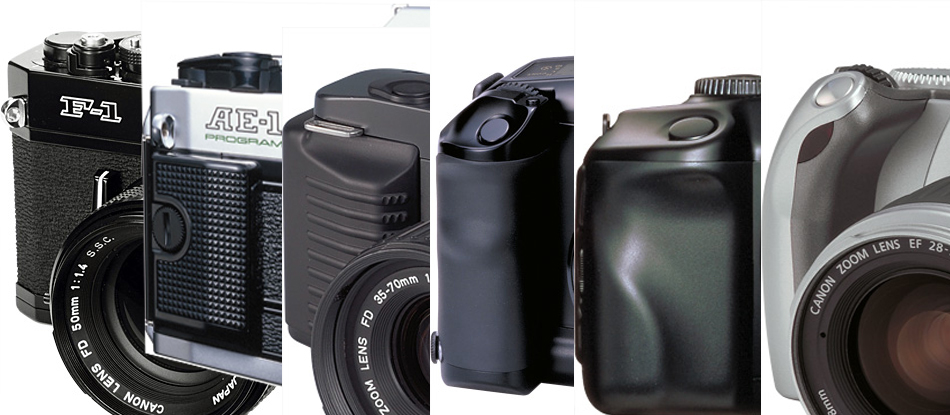
There is no doubt that the 300V is a good looking camera. The design overall looks sleek, modern and comfortable – everything the amateur film photographer would want or need. Things get better from the back with the inclusion of a large, clear LCD with all current settings clearly displayed. For all intents and purposes, this camera screamed “digital” even though it was still very much an analogue image making tool.
Look, Mom, one hand…
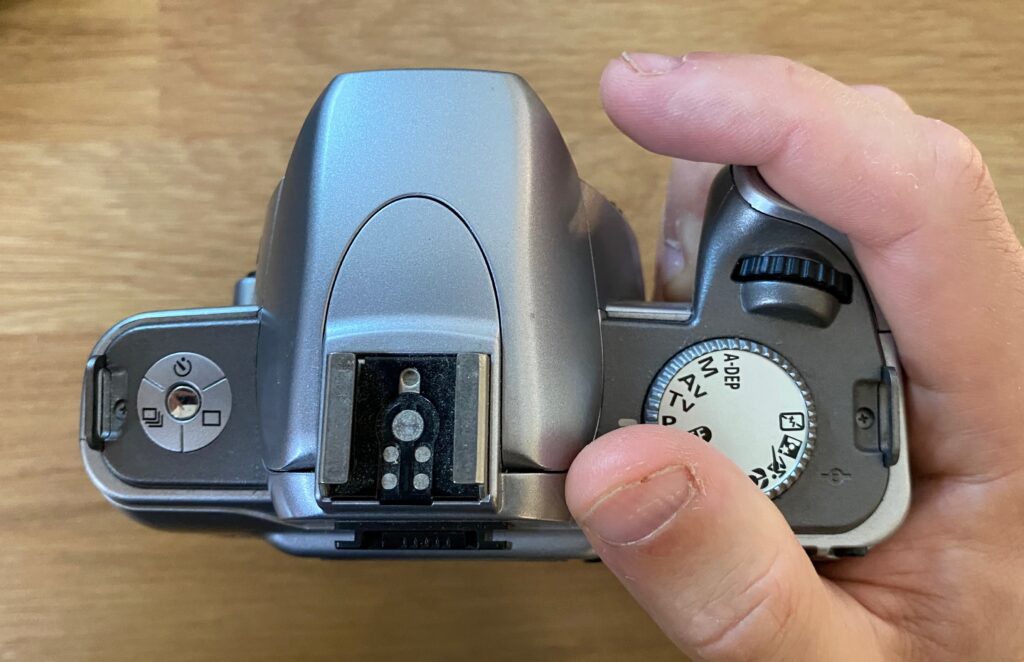
Canon were keen to push that this was a camera so well designed and so simple to use that it could be controlled almost entirely with one hand. This is what they had to say about the 300V on their website in 2002:
The EOS 300V combines high-end features with a metallic, compact, lightweight and robust design. Seven focusing points, and the fastest AF area in its class*), mean that the camera focuses quickly. The active focusing point super imposes in red in the viewfinder. The exposure metering system uses 35 zones, linked to the active focusing point. The command dial has been moved to the right, enabling you to operate all the main controls with one hand. Besides the usual 5 basic Programmed Image Control shooting modes, there is a new mode “flash-off” which disables the built-in flash, or an attached Speedlite. The LCD panel has been moved to the back of the camera and is about three times larger than the panel on the EOS 300.
https://web.archive.org/web/20021201111919/http://www.canon.co.uk/eoscameras/index.html
I don’t really know why you need a one handed camera, I cannot recall a time when I’ve thought “I wish everything was loaded on to the right side of the body.” The large screen was a welcome addition, but as with the EOS IX7, it takes some getting used to when you expect the display to be on top of the body all the time.
Admittedly, I didn’t expect to get on with the grip design on the 300V. As can be seen in the picture above, although a lot of work had gone into being a contoured design, it is far too small to achieve the goal of fitting your hand better. Earlier bodies were physically far larger and the extra bulk really helps a camera to feel more secure when holding it for any length of time.
The proof comes from actually using the camera and… how wrong I was. I have to admit that not once did I feel like the 300V was a poor design, hard to hold or insecure. I used it for a while in the rain and even in slippery conditions it felt great. This shows how much I know about handling…
Buying a 300V in 2022
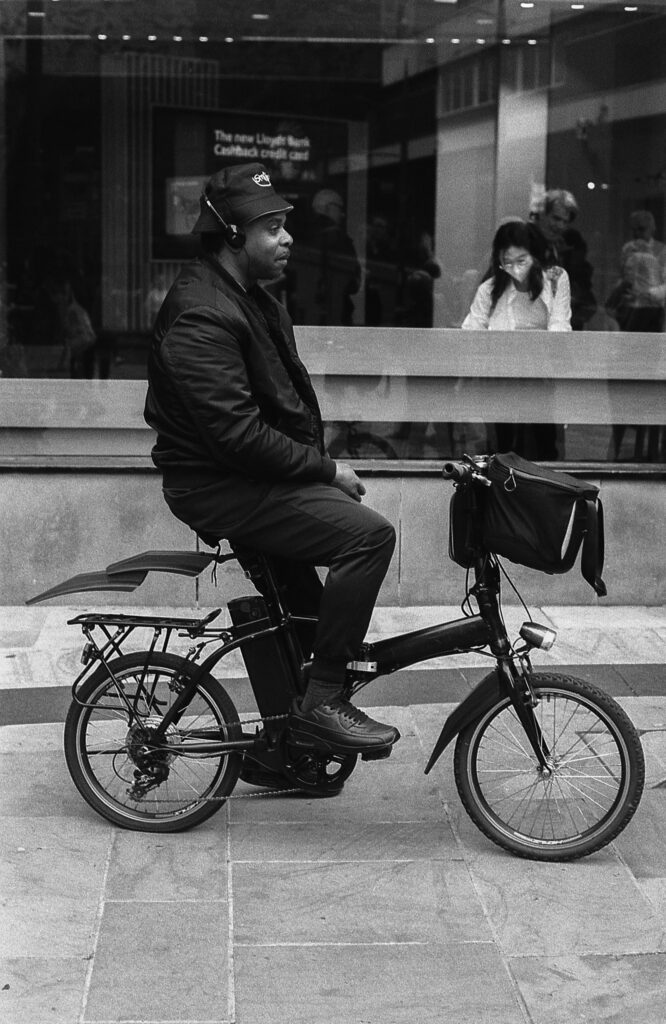
My usual budget for these entry level film SLR’s is about £10 all in. This might sound like I’m being Scrooge McDuck, but you have to remember they sold millions of these cameras, they were mass market offerings and so seemingly everyone has one in the loft, bottom of a wardrobe, down the back of the sofa or under the fridge. Hence, prices for cameras at the bottom end of the range like the 1000F, 3000, 300 and so on are selling for pennies these days.
This is not the case for the 300V. Unsurprisingly I cannot find sales figures anywhere, but from the internet Archive it is possible to see that the model was introduced in September 2002 and discontinued some time after January 2006. That run of at least three years is a decent innings for a single model in any product lineup and can only mean that it was both a success and sold in decent numbers.
Whether it is the striking design or that they weren’t popular in the UK, examples are much harder to find on eBay and certainly not for the bargain basement prices that most other bodies are going for. I’m not saying the 300V is rare or overly expensive, but prices are certainly not in the “charity shop” window.
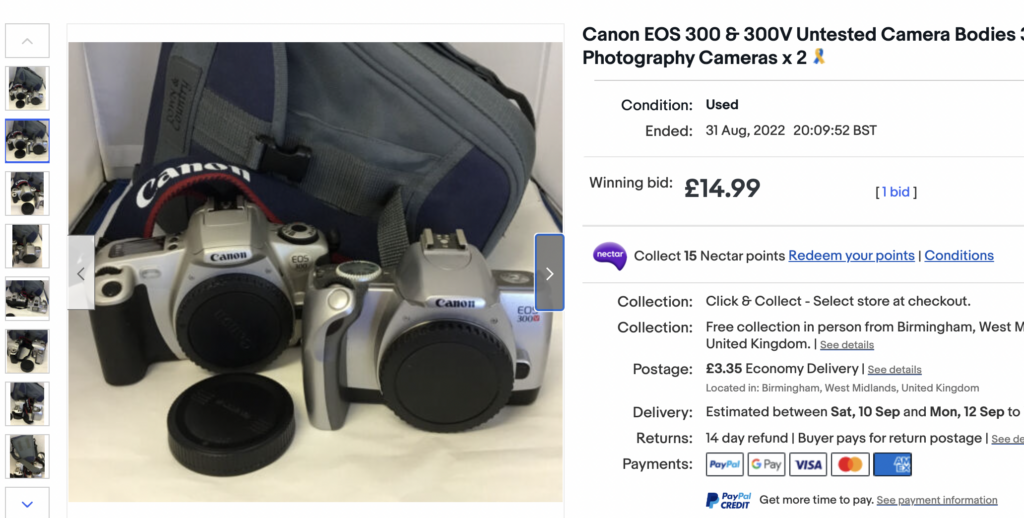
It took a while, but I finally landed one for the princely sum of £14.99 and as a bonus I got a free EOS 300 thrown in, so we’ll call that £7.50 each. This isn’t bad as a search today shows that the cheapest 300V right now is £24 all in and prices rise from there. There is something apparently desirable about these bodies. The 300 was a nice add on as I’d just ran a roll through one and found that it has nasty light leaks from a slightly bent film door that I hadn’t noticed. I’d bought it to compare with the EOS 3000, so that’s a test for another day.

If you fancy your own 300V and you’re not someone with a camera consumption problem like me, then £20 or so really isn’t outrageous for a camera this capable. If, however, you’ve shelves full of cameras for no other reason than you like having sets of things or you just like numeric sequences, then maybe tough it out until an auction comes along giving you the chance to go £10-15. I don’t think you’re going to get one for much cheaper unless you’re very lucky.
AF performance and controls
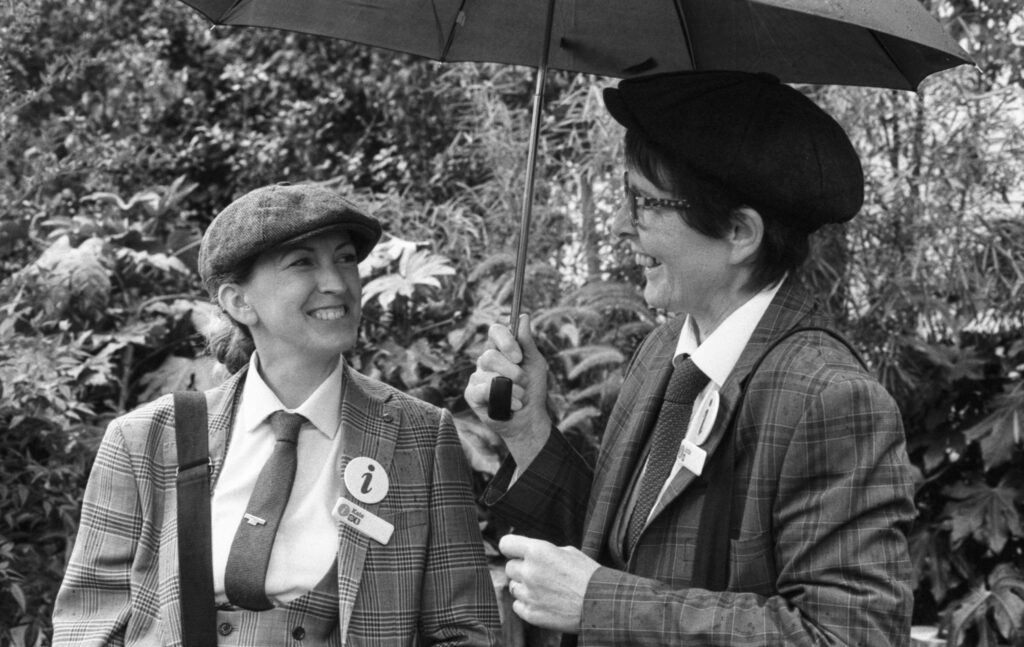
So the time comes to look at that big selling point – the AF. As with nearly all of the entry level models, Canon hard wired the 300V to use what they later branded “AI-AF.” What this means in practise is that the camera normally expects you to focus on a still subject, however if it detects movement it will then switch automatically into Servo AF, meaning it starts to track a subject as it moves and adjusts focus as necessary.
I can understand exactly why they did this on entry level models and I’m sure it went a long way to rescuing many frames that would otherwise have been lost. In my case, I find it really frustrating to not have control over what the AF is doing. Unless I am specifically shooting moving subjects, I always want my camera to be in one shot focus mode.
Canon allow you to try and trick this with “focus lock” that is meant to engage when you half press the shutter. I lost count of the number of times that I half pressed, recomposed and then found that it suddenly decided something was moving and started to focus again. I lost quite a few opportunities because of this behaviour. The final model in this line, the 300X, which superseded the 300V had the added ability of AF mode selection, but good luck finding one of those for less than £50 right now!
That’s the bad. The good is that the AF in the 300V really is rather capable. It is noticeably quicker than any other entry level body I have used such as the 1000f, 3000, 300 or 500. It feels almost exactly the same as the AF in the 300D and I would not be at all surprised if the AF in the 300D wasn’t exactly the same or a slight evolution – performance wise it is basically identical. Other than hunting on plain backgrounds or in a focus and recompose situation as mentioned, the 300V nailed focus each and every shot to the point where I completely stopped checking focus and just fired off shots regardless.

Any long term Canon SLR user will have grown to love the information display placed just behind the shutter on the top of the body. This had been the Canon standard from almost the very start to the very end. The 300V is one of few bodies that does away with this display and it really messes with your muscle memory when you want to quickly check the aperture or shutter speed.
I did eventually get used to the display on the back and its large size really does make everything you want to know at a glance crystal clear. There’s nothing wrong with what they did here, it’s just different and that means training yourself to look somewhere else. I eventually took to periodically dialling in an aperture, half pressing the shutter to get an indication of shutter speeds for the kind of light I was in and then moving on.
I am beginning to think that I either have odd eyes or I hold cameras in a weird way, because like in the previous review of the 500N, I kept missing the green display inside the viewfinder that tells you exactly the aperture, shutter speed and focus indication that you need. It is like my brain just point blank ignores it and then every now and again I’ll notice it and think “oh, that’s useful!” This display means you don’t need to keep moving the camera from your eye to check settings and is very convenient. I honestly don’t think it is too small or difficult to see, I am literally just odd.
Where does it fit in?

Between 1993 (the EOS 500) and 1999 (the EOS 300) Canon had produced a string of “not quite entry level but still relatively cheap” cameras. All models produced in these six years followed the same formula of having a slightly smaller body than a prosumer model, sturdy and lightweight build quality, reasonable AF performance (better than the bottom of the range X000 models) and a nice mix of manual and automatic shooting modes.
Over time, some custom functions started to trickle in as it became more difficult to differentiate between the two classes of camera propping up Canon’s lineup. It would be fair to suggest that anyone buying an EOS 500 in 1993 really did have no compelling reason whatsoever to upgrade to an EOS 300 in 1999. Even Canon themselves could only point out that we’d now gone from 3 to 7 AF points and that it was “smaller and more comfortable to hold” which is debatable depending on your preferences.
Canon knew that the days of film were numbered. They also knew that the lower end of the film SLR market would be the last to switch the lights off and close the door behind them, hence the need to produce one last compelling reason to buy a new film SLR in the twilight years of analogue photography. As discussed earlier, the obvious way to do this without cannibalising the better models in the range, was to do a classic car manufacturer relaunch – stick a new outer shell on an older engine and drivetrain and sell it as new.

This refresh strategy worked a treat and Canon produced something that looked like it really did belong in the futuristic expectations of the post millennium public. They had needed to make something that looked like you were buying a well thought out, futuristic product and seemingly they met the challenge. Consumers in 2002 would absolutely have appreciated the design language used and certainly considered the 300V a worthy upgrade with the genuine leap forward in AF performance that it offered.
Today, the 300V is equally compelling to the new, thrifty or simply curious film photographer. Anyone with an EF lens from their digital kit that wanted to get into a bit of film could do a lot worse than pick one of these up as a starting point, a lot of it would feel instantly very familiar and usable.
I still cannot get my head around the fact that the 300V is the same price, if not more, than an EOS 50. Its future offspring, the 300X is even more absurd as it sells for more than an original EOS 1. I don’t think anyone would find that decision difficult – who, being of sane mind and with £80 to burn, would buy an entry level SLR over the top of the line 1 series?
The 300V is on the verge of becoming something of a design classic to those who are interested in film photography and perhaps this is where those ever rising prices are coming from. Over in the US, they are widely available for $12-14 and I’d guess even cheaper in their thrift stores like Goodwill.
Conclusions and Learning
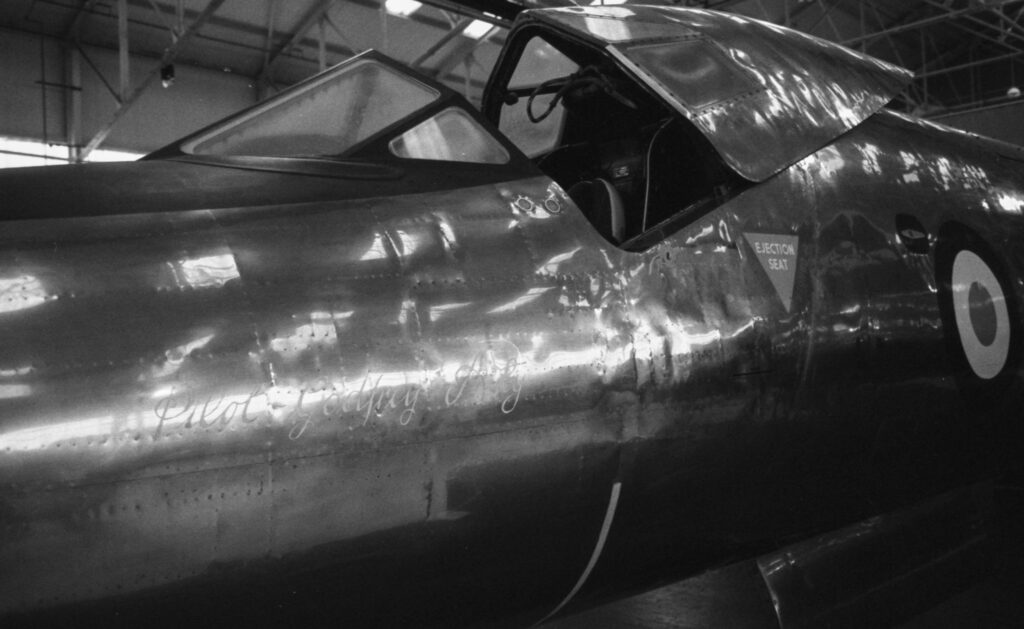
The Canon EOS 300V is a brilliant little camera, no doubt. I had a lot of fun using it and would go back to it with another roll of film without hesitation. For street photography it was almost spot on because of the snappy AF performance, giving confidence that you’d hit the shot in the right moment when you wanted it. Indeed, for the first time ever I managed an off the cuff, drive by shot that came out in focus.
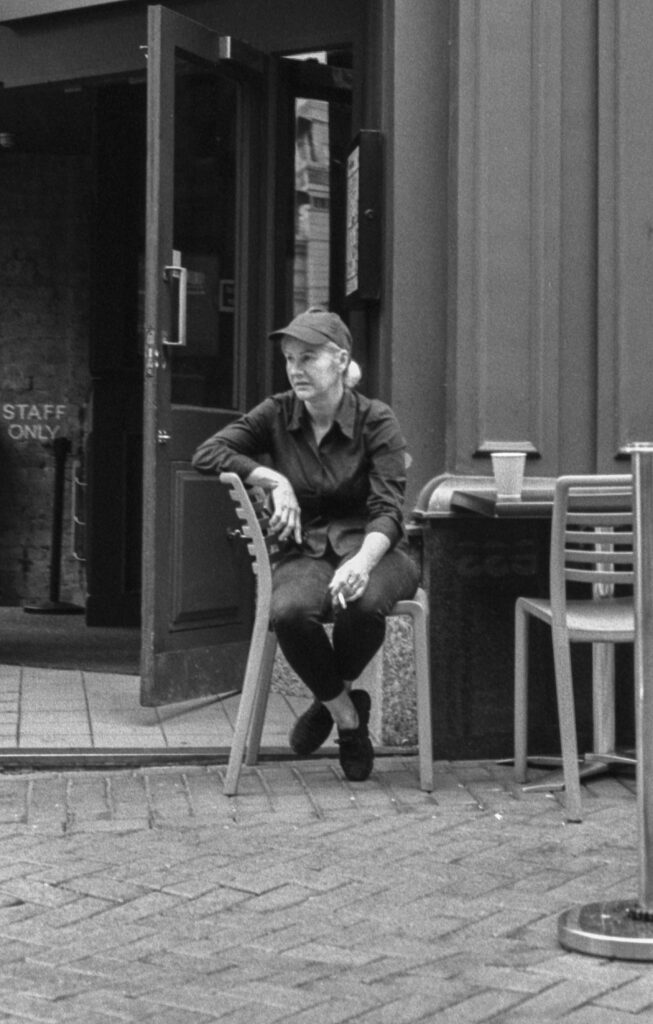
Is this an essential, entry level SLR for those of us on a budget or trying to find a way in to film again? Well, yes and no really. It isn’t compelling enough in my opinion to make you discount the EOS 300 or 500 and both of those would do just fine as a substitute. I have enjoyed using all three of these models in recent weeks and honestly, I’d be happy with any of them. All share decent AF, the 300V is undeniably the best in this respect, but in every other they may as well be the same camera.
All of the three figure EOS cameras share almost identical shooting modes, custom functions and control layouts. The most important common factor, though, is that they are all supremely capable within their context. For anyone wishing to shoot action on film, fast paced subjects or for whom control over AF mode is essential, then of course these models don’t come up to scratch. For anyone else, they are just a superb starting point that leave you with plenty of room in the budget for a 50mm lens to get you going.
If I had to pick one which offered the absolute best value for money, it would have to be the EOS 500, simply because they are still at rock bottom, sub £10 all in prices. For a few extra quid, the 300V really is a wonderful camera.
I wanted to hate the design, I didn’t. I thought I wouldn’t get on with the new design of grip, I did. I didn’t think the AF would make all that much difference – guess what? It did. No wonder Canon kept knocking out film SLR’s as late as they did, people must have found the later models great value for money and really surprisingly good image making tools.
The only question now is how will I ever find a 300X at a sensible price to see what the very final launch of a Canon film SLR had to offer?
Share this post:

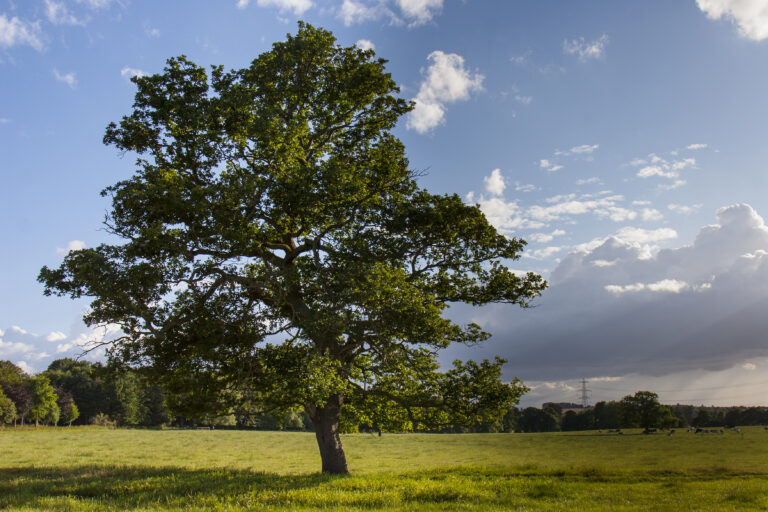
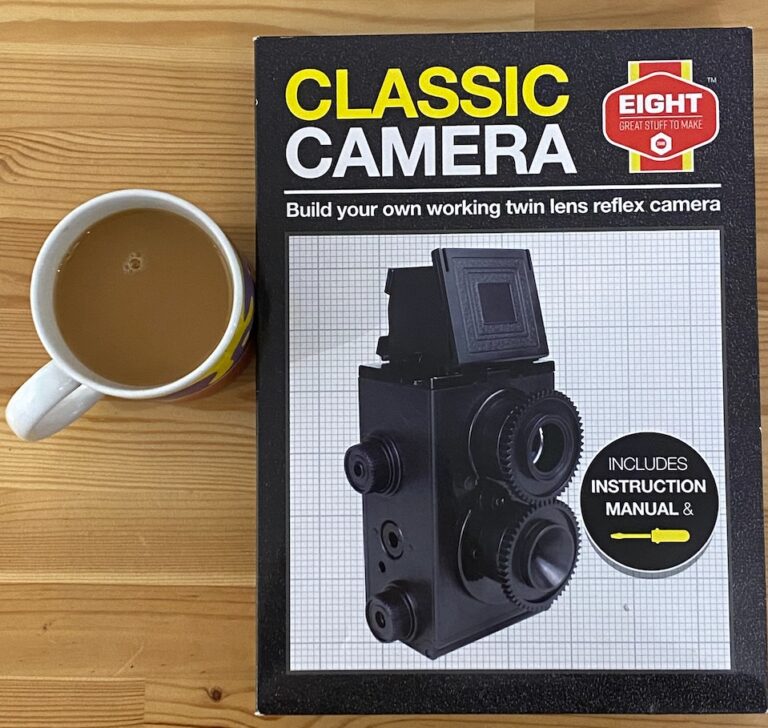
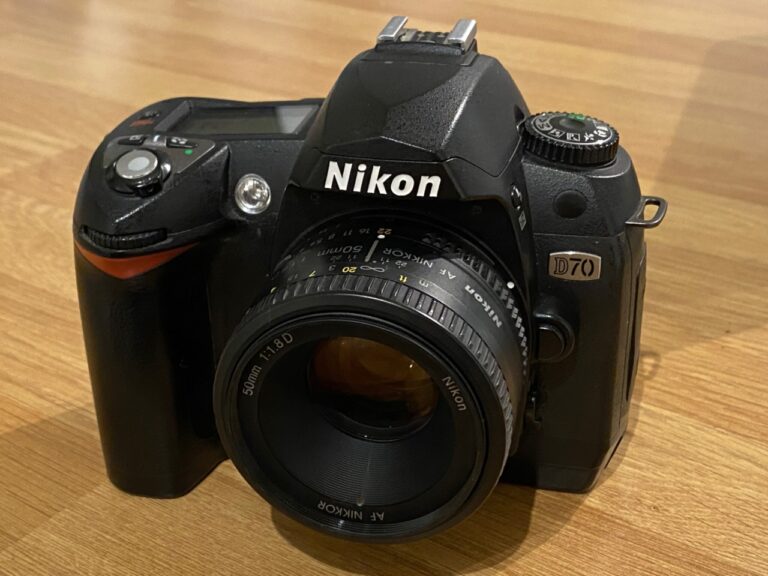
Good article, thanks
Thanks for this article, these cameras are extremely capable but frequently overlooked. If you go one step up to the 300X it’s worth it, you get 1/4000s maximum shutter speed as well as a d-pad to select AF points – basically a small version of the enthusiast-level 30V.
I love the 300V and have actually gone back to it in recent weeks. The 300x is a surprising improvement in many areas – at a first glance I thought it was a minor update but there’s more to it than that. I’ve reviewed the 300x as well here The Final EOS Film SLR – Culmination or Capitulation? The Canon EOS 300X Review